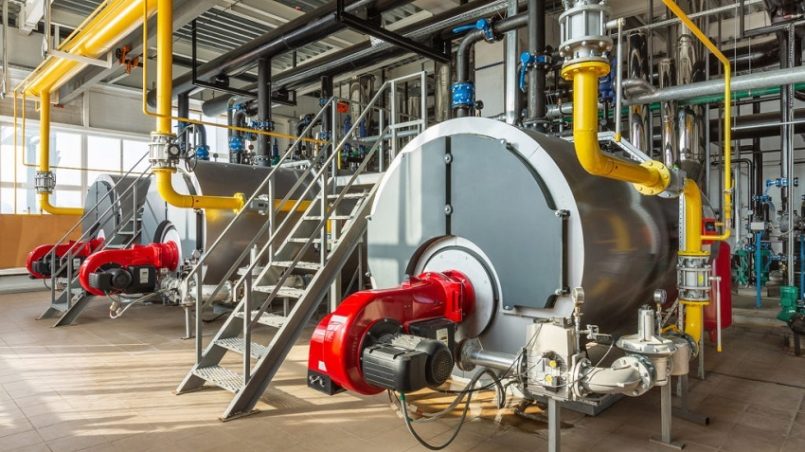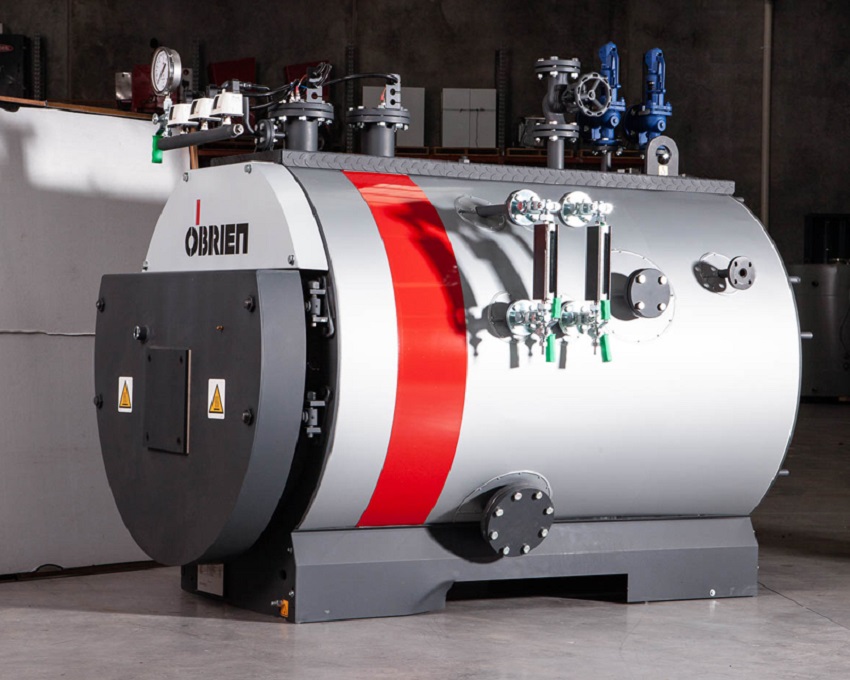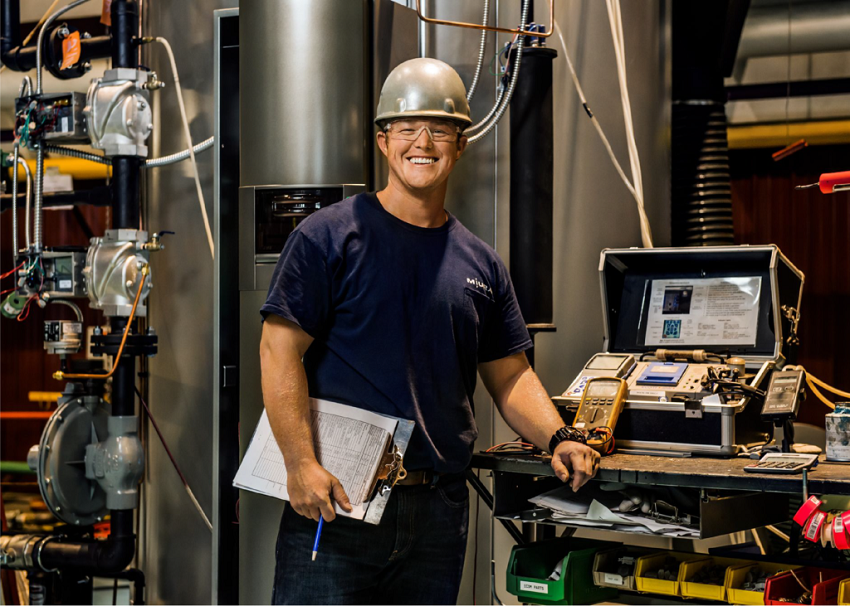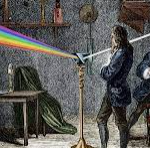Steam boilers play a crucial role in various industries and provide a reliable source of heat and power. Steam boilers are widely used, whether it’s generating electricity, heating buildings, or driving industrial processes. In this article, we’ll explore the inner workings of a steam boiler and understand how does a steam boiler work.
Steam boilers have been around for centuries and are integral to modern infrastructure. These boilers convert water into steam, which can be utilized for various applications. From large power plants to small-scale industrial processes, steam boilers are essential for generating heat and power efficiency.
What is a Steam Boiler?
A steam boiler is a closed vessel designed to heat and convert water into steam. It consists of several components that work together to facilitate the steam generation process. These components include the firebox, heat exchanger, boiler feedwater system, steam distribution system, and combustion system.
Components of a Steam Boiler
Firebox
The firebox is the chamber where fuel combustion takes place. It is typically lined with fire-resistant materials to withstand high temperatures. The fuel, which can be coal, oil, gas, or biomass, is burned in the firebox to release heat energy.
Heat Exchanger
The heat exchanger is a vital component that transfers heat from the combustion gases to the water. It consists of a series of tubes or passages where the hot gases flow, allowing heat transfer. As the water absorbs the heat, it starts to boil and forms steam.
Boiler Feedwater System
The boiler feedwater system supplies water to the boiler and ensures a continuous water flow for steam generation. It typically includes pumps, a water treatment system, and controls to maintain proper water levels and quality.
Steam Distribution System
The steam distribution system carries the generated steam to the desired location, whether a turbine for power generation or a heat exchanger for industrial processes. Pipes and valves are used to control the flow and pressure of the steam.
Combustion System
The combustion system delivers the fuel and air mixture to the firebox for efficient combustion. It consists of burners, fuel supply systems, and air dampers to control combustion and optimize fuel efficiency.
Working Principle of a Steam Boiler
The working principle of a steam boiler involves three main steps: fuel combustion, heat transfer, and steam generation.
Fuel Combustion
In the firebox, the fuel is introduced and combusted with the help of an ignition source. The combustion process releases heat energy, which is transferred to the heat exchanger.
Heat Transfer
As the hot combustion gases flow through the heat exchanger, heat is transferred to the water surrounding the tubes or passages. The water absorbs the heat, increasing its temperature and converting it into steam.
Steam Generation
The conversion of water into steam occurs as it reaches its boiling point under the given pressure. The generated steam is then collected and directed to the steam distribution system for further use.
Types of Steam Boilers
Steam boilers come in various types, each suited for specific applications and operating conditions. The common steam boilers include fire-tube boilers, water-tube boilers, electric boilers, and biomass boilers.
Fire-tube Boilers
Fire-tube boilers have a cylindrical shell filled with water, and the hot combustion gases pass through the tubes within the shell. These boilers are suitable for low-pressure applications and are widely used in heating buildings and small industrial processes.
Water-tube Boilers
Water-tube boilers have water-filled tubes that are heated externally by combustion gases. These boilers can operate at high pressures and are commonly used in large power plants and industrial applications requiring high steam pressures.
Electric Boilers
Electric boilers use electricity to generate steam. They are highly efficient and have precise control over steam production. Electric boilers are often used in smaller applications and where fossil fuels are not readily available.
Biomass Boilers
Biomass boilers use organic materials, such as wood pellets or agricultural waste, as fuel. They are considered a renewable energy option and help reduce carbon emissions. Biomass boilers are commonly used in industries that produce significant amounts of organic waste.
Steam Boiler Operation
Operating a steam boiler involves several steps, including startup, firing, steam generation and pressure control, and regular maintenance.
Startup Process
During the startup process, the boiler is prepared for operation. This includes checking the water level, ensuring proper fuel supply, and verifying all safety systems are functional.
Firing the Boiler
The fuel is ignited once the startup process is complete, and the combustion process begins. The burners provide heat energy to raise the water temperature and generate steam.
Steam Generation and Pressure Control
As steam is generated, it is essential to maintain the desired pressure levels. Pressure control systems and safety valves ensure the steam pressure remains within safe operating limits.
Boiler Maintenance
Regular maintenance is crucial to keep a steam boiler operating efficiently and safely. This includes routine inspections, cleaning, and the replacement of worn-out parts. Proper maintenance extends the boiler’s lifespan and reduces the risk of malfunctions.
Applications of Steam Boilers
Steam boilers find applications in various industries due to their versatility and reliability.
Power Generation
Steam turbines driven by steam boilers are widely used for electricity generation. The high-pressure steam produced by the boiler is expanded through the turbine blades, generating mechanical power that is then converted into electricity.
Heating and Hot Water Supply
Steam boilers are commonly used for heating buildings and providing hot water for residential, commercial, and industrial purposes. They offer a cost-effective and efficient solution for space heating and water heating needs.
Industrial Processes
Many industrial processes rely on steam for heat transfer or as a power source. Industries such as chemical, pharmaceutical, food processing, and textile utilize steam boilers for various applications, including sterilization, drying, and cleaning.
Advantages and Disadvantages of Steam Boilers
Steam boilers offer several advantages, such as high efficiency, reliability, and versatility. However, they also have certain limitations.
Advantages:
- High energy efficiency
- Reliable and consistent steam supply
- Versatile applications across industries
- Well-established technology with a long history of use
Disadvantages:
- Initial cost of installation and equipment
- Maintenance requirements and costs
- Need for proper water treatment to prevent scaling and corrosion
- Emission of pollutants, depending on the fuel used
Safety Considerations
Safety is of utmost importance when operating a steam boiler. Several safety devices and precautions are in place to ensure safe operation.
Pressure Control and Relief
Pressure control systems, including pressure relief valves, prevent the boiler from exceeding safe pressure levels. These valves release excess pressure to prevent potential explosions.
Water Level Control
Maintaining proper water levels in the boiler is essential to prevent dry firing, which can cause damage to the boiler. Water level control systems and alarms help maintain the correct water level.
Boiler Safety Devices
Boilers are equipped with various safety devices, such as temperature and pressure gauges, flame detectors, and safety interlocks. These devices monitor and control critical parameters to ensure safe operation.
Energy Efficiency and Sustainability
Efficiency and sustainability are vital considerations in steam boiler operation.
Efficiency Measures
Improving boiler efficiency helps reduce fuel consumption and operating costs. Measures such as proper insulation, regular maintenance, and using economizers can enhance efficiency.
Renewable Fuel Options
Using renewable fuels, such as biomass or biofuels, in steam boilers contributes to sustainability efforts. These fuels reduce reliance on fossil fuels and help mitigate carbon emissions.
Emissions Reduction
Steam boilers can emit pollutants, depending on the type of fuel used. Employing emission control technologies, such as scrubbers and selective catalytic reduction, helps reduce emissions and minimize environmental impact.
Future Trends in Steam Boiler Technology
Advancements in steam boiler technology continue to enhance their performance, efficiency, and sustainability.
Advanced Controls and Automation
Intelligent control systems and automation allow for precise monitoring and adjustment of boiler operations. This results in optimized performance, reduced energy waste, and improved safety.
Integration with Renewable Energy Sources
Integrating steam boilers with renewable energy sources, such as solar or geothermal energy, offers a sustainable approach to steam generation. Hybrid systems that combine multiple energy sources are gaining traction.
Improved Efficiency and Sustainability
Ongoing research and development focus on improving boiler efficiency and sustainability. This includes advancements in materials, combustion technologies, and waste heat recovery systems.
Conclusion
Steam boilers are essential for various industries, providing heat and power efficiently. Understanding how steam boilers work, their components and their operation helps optimize their performance and ensure safe and sustainable operations. As technology advances, steam boilers are expected to become even more efficient and environmentally friendly, contributing to a greener future.
















